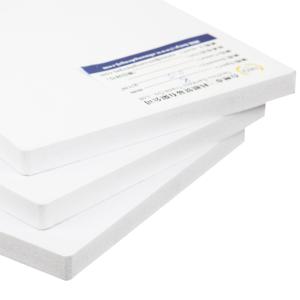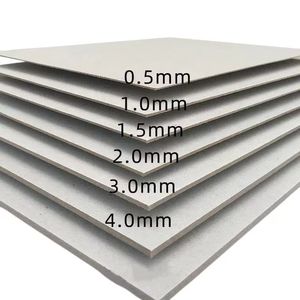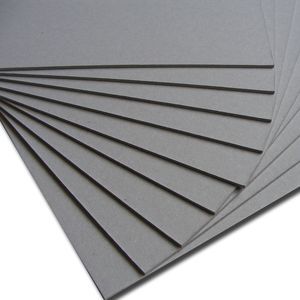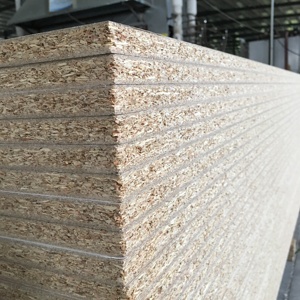
All categories
Featured selections
Trade Assurance
Buyer Central
Help Center
Get the app
Become a supplier

(189544 products available)







































A chips board, also known as particle board, is an engineered wood product made from wood chips, particles, and a resin binder. It comes in various forms tailored for specific uses and industries. Here are some of the most common types:
Standard Particle Board
This is the most basic form of a chipboard. It is made from wood particles of different sizes bonded together with synthetic resin under heat and pressure. The result is a cost-effective panel with varying degrees of strength and density. It is widely used in furniture production, construction, and internal applications. It is also known as a chipboard or general-purpose particle board.
Melamine Faced Chipboard
This type of chipboard is coated with melamine resin on one or both sides. The coating process fuses the melamine with the chipboard, creating a durable and decorative surface. The design options are customizable, ranging from solid colors to wood grain patterns. It is suitable for cabinets, countertops, and office furniture. It is also known as MFC or Melamine faced chipboard.
Glued Chipboard
Also known as a cement-bonded chipboard, this particle board uses cement as a binder instead of synthetic resins. The wood particles are mixed with cement, creating a dense, heavy, and strong board through curing. It has high load-bearing capacity and excellent fire resistance. The applications include industrial flooring, external cladding, and high-strength construction. It is also known as a wood-cement board.
Coated Chipboard
This type of particle board is made by mixing wood particles with various additives and coatings. These additives can include colorants, fire retardants, or anti-fungal agents. It results in a board with specific properties tailored for unique applications. The applications are decorative furniture, specialized cabinetry, and moisture-resistant panels. It is also known as a specialty particle board.
High-Density Chipboard
This type of particle board is produced by using finer wood particles and higher resin content during the manufacturing process. It results in a denser and heavier panel. It has a smooth and consistent surface ideal for applications requiring high strength and stability. The applications include high-quality furniture, laminated surfaces, and load-bearing structures.
Acoustical Chipboard
This type of particle board is designed specifically to reduce sound transmission. It is manufactured with a particular formulation and particle arrangement to absorb sound waves. It is commonly used in commercial spaces, offices, and residential buildings. Acoustic panels and soundproofing applications are some of its common uses.
Moisture-Resistant Chipboard
This type of chipboard is treated with special additives during the manufacturing process to enhance its resistance to moisture. It is also referred to as water-resistant or moisture-repellent chipboard. It is commonly used in areas prone to high humidity, such as bathrooms and kitchens. It is also known as a moisture-resistant particle board.
Wood chip boards are widely used because they are economical and have many uses. They are made of wood chips, shavings, and sawdust glued together and compressed under high pressure to form a board. Because of this, they are environmentally friendly and use waste material from the wood industry. The boards are used for furniture, flooring, and construction, and their wide application makes them a popular choice in many industries.
Due to their wide application, chipboard comes in different varieties, which include:
Chipboards are widely used in the construction and furniture industry due to their versatility, cost-effectiveness, and environmentally friendly characteristics. Here are some common usage scenarios:
Furniture Manufacturing
Furniture made from chipboard is popular in the living room, office, bedroom, and kitchen. This is because it is less expensive than solid wood. Furniture such as cabinets, dressers, desks, tables, and chairs are made of chipboard. In addition, internal furniture like bookshelves, entertainment centers, and storage units are made of chipboard.
Wardrobe And Closet Systems
Chipboard is often used to construct closet organizers, shelving systems, and hanging rod brackets. This is because it provides a cost-effective solution for users to customize their storage space without breaking the bank.
Kitchen Cabinetry
Most kitchen cabinets are constructed using chipboard. The reason behind this is that homeowners can customize their kitchen design and styles to fit their space and needs, which is more cost-effective than traditional solid wood cabinets.
Commercial Fixtures And Casework
In offices, retail shops, restaurants, and other commercial settings, chipboard is used to make counters, reception desks, display shelves, and storage units. This is because it is less expensive compared to plywood or solid wood, which can help reduce overall construction or purchase costs.
Underlayment And Subfloors
In some flooring systems, chipboard is used as an underlayment or subfloor material. This is common in residential buildings where the owner needs to install laminate or floating flooring. The chipboard provides a smooth and level surface for the laminate flooring to be installed.
Wall Panels And Partitioning
Chipboard is used in some cases to create interior walls, panels, and partitions. It offers a cost-effective solution for users to divide spaces without using expensive solid wood or metal framing. Chipboard can also be painted or textured to create decorative wall features.
Bed Frames And Mattresses Supports
Some metal and mattress supports are made of chipboard. This is because it is a cost-effective solution for constructing platform beds or storage beds that include drawers.
Decorative Items
Some decorative items, such as picture frames, wall clocks, and small decorative furniture, are made of chipboard. This is because it is a cost-effective way of producing these items.
Consider the Durability
Durability is an important factor to consider when buying particle boards. Some chipboards are more durable than others. The durability of the board is affected by the size of the chips used to make it and the type of resin used. Boards with smaller chips are more durable than those with larger chips. This is because the surface area of the smaller chips offers more bonding points than larger chips. The type of resin used also affects the durability of the board. Aurea resins are more durable than urea resins. This is because they provide better boards that are waterproof and have higher temperature resistance.
Moisture Resistance
Moisture resistance is an important factor to consider when choosing which board to buy. Some boards are more waterproof than others. Waterproof boards like OSB boards can be used in areas with high moisture content, such as kitchens and bathrooms. Other boards, like MDF, are not moisture resistant and should not be exposed to water.
Weight
The weight of the chipboard should also be considered when buying it. Heavier boards are usually more durable than lighter boards. This is because they have more glue and smaller chips. However, the weight of the board does not affect delivery costs. Delivery costs are affected by the size of the board.
Consider the Thickness
The thickness of the chipboard should be considered when buying it. Thicker boards are more durable and have better bending resistance. Thicker boards can also be used for different applications. However, the thickness of the board also affects the amount of raw material that is used to make it.
Application
The application of the chipboard should be considered to ensure the right one is selected. Different applications require different types of boards. For instance, furniture grade particle board is ideal for furniture construction, while flooring grade boards are used for subflooring in flooring installations.
Q1: What are the standard thicknesses of chips boards?
A1: Chipboard thickness varies depending on use. Architectural chipboards used for flooring and decking are usually 18mm to 22mm thick. This provides adequate strength and stability. Furniture grade chipboards are commonly 15mm to 18mm thick. These thicknesses are suitable for constructing drawers, cabinets, and tabletops. Decorative chipboards used in applications where the edge strength is not a concern, such as backing panels, are often 9mm to 12mm thick.
Q2: Are chipboards waterproof?
A2: Standard chipboards are not waterproof. They can absorb moisture and water, which causes them to swell and lose structural integrity. However, waterproof or water-resistant chipboards are available. These boards have a resin coating that is applied during manufacturing to make them waterproof. They can also be referred to as MRF boards.
Q3: How is the lifespan of chipboard determined?
A3: The lifespan of the board is determined by the manufacturing process, environmental factors, and the use to which the board has been put. Factors like the amount of resin used, the type of wood used, and the manufacturing process determine the quality of the board. The higher the quality, the longer the board will last. Environmental factors like humidity and exposure to water also affect the lifespan of the board. Waterproof chipboards have a shortened lifespan due to exposure to water. Proper installation also determines the lifespan. Poor installation techniques lead to a shortened lifespan.
Q4: Can chipboards be recycled?
A4: Yes, chipboards can be recycled. When the boards are collected and taken back to the recycling center, the boards are processed to create the original wood chips. The wood chips are then mixed with resin and processed to create a new chipboard. This process conserves natural resources and reduces waste.
Q5: Are chipboards eco-friendly?
A5: The manufacturing process of chipboards makes them eco-friendly. They use small wood particles, which reduces waste. The boards also use up waste products from the sawmill, which reduces the amount of waste that is dumped in landfills. Because the boards are made from small wood particles, they make use of the entire tree.